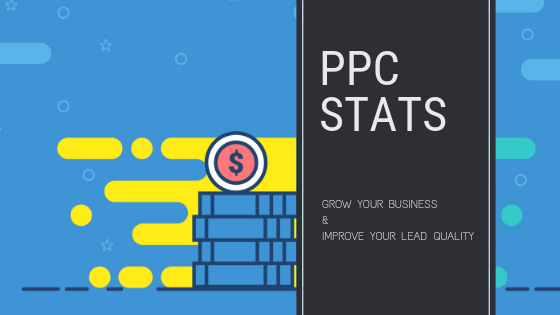Does the Google Ads dashboard make you break out in hives? Does the difference between Search and Display elude you? Do acronyms like PPC, CTR, CTA, and CPC fill you with math-test-level dread?
You’re not alone.
PPC (pay per click) is some people’s #1 marketing anxiety. Usually relegated to the “I tried it once, but it didn’t work” pile, PPC can be an arduous, daunting task, but guess what? It can also be an extremely rewarding lead generation avenue producing better, more qualified leads that spend more money with your business.
In today’s post, we’re going to look at how PPC can put a little mojo back into your online marketing lead generation strategy. There is NOT a pop quiz at the end of this, so relax and get ready to learn about the wonderful world of search and display!
What the *&$% is PPC?!?
The two main search engines that provide PPC: Google and Bing (yes, Bing). They both offer PPC services to advertisers (businesses) to help them get their wares in front of a captive search audience. Now, one does not casually stroll into Mordor PPC territory—you must be acquainted with the jargon, the acronyms, and the mechanics.
It’s been a while since you’ve gotten to have a word bank so let’s have at it:
PPC (pay per click) advertising is an online marketing model in which advertisers (you) pay a fee every time an ad is clicked by a user.
Paid Search refers to paid ads on search results pages. With Paid Search, you can target specific keywords that are relevant to your company/services and bid for your ads to show when users are searching for those keywords. You’ve seen them before, those ads at the top (and sometimes bottom) of the SERPS. Those are search ads, and someone like me spent some time researching, formulating, and testing the very ad copy you see to get your attention (and your clicks).
![]()
Display ads are a little different and, as their name indicates, they include image assets (or, in some cases, video!) and rich media (stuff that moves). Where search relies on keywords, display centers around audiences on channels, or pages, across the internet based on things like topics (think Business, Lifestyle, Beauty, etc.).
CPC (cost per click) is a word you’ve likely heard bandied about—it’s what your ad costs per each user’s click. Depending on how competitive your keyword is, your CPC may be higher or lower. PPC providers use a bidding system, so CPCs change based on how popular a search term happens to be.
CTR (click through rate) is just what it sounds: it’s the percent of people who saw your ad and clicked on it. Now, I know I said there was no math test (and there isn’t) but there’s always someone who wants to know HOW these rates are determined. There’s a pretty simple formula (shield your eyes if you are triggered by math):
Clicks / Impressions = CTR
See? Nothing scary. Just some simple division. And guess what? It’s calculated for you, so you can put that calculator away.
CTA (call to action) is the action you want people to take. CALL NOW! LEARN MORE! SIGN UP! are all very common calls to action that you probably see every day. CTAs are actually a pretty critical part of your conversion path: if it’s TOO aggressive then people will be scared to click but if it’s too casual the sense of urgency may be lost which means they also may not click.
Conversion (it’s not an acronym, weirdo) is…well, a conversion. Depending on the CTA you choose, your conversion is the action you want them to take. Calls, clicks, sign-ups, purchases, etc. Knowing the action you want to take is a critical component to putting together a successful ad campaign.
Phew. I know that’s a lot of new vocab but expanding your marketing lexicon helps your brain AND your bottom line.
Next up: Why is PPC so important to my business?
Important PPC Statistics
Now that we have the WHAT, we need the WHY. Take a gander at these eye-opening PPC stats for both Google AND Bing:
-
- There are more than 160 billion searches being performed on Google every month so investing in PPC ads on Google is likely to provide your brand with significant exposure to your target audience.
-
- 30% of the total monthly searches on a search engine are done through Bing, which means Google Ads aren’t the only channel to look at for your PPC strategy.
-
- According to Google, businesses that use its AdWords (now Google Ads) PPC platform see a high ROI (return on investment) of $2 for every $1 that they spend.
-
- Bing bids have been shown to be lower than Google Ad bids (but keep in mind, that’s because the keywords are less competitive because of a smaller audience).
-
- Consumers who use Microsoft and Yahoo sites (Bing territory) spend 21.5% MORE than the average digital citizen (about 0.76% more than Google searches).
- People that land on your website through a PPC ad are 50 percent more likely to make a purchase than visitors who arrived organically.
-
- PPC ads appear at the top of Google’s SERP (search engine results page). Considering that 95.3 percent of all clicks go to the top four results. they often have a better chance of receiving clicks than organic listings.
-
- The top three paid ads on Google’s SERP earn on average 41 percent of the clicks.
-
- Product ad listings earn around 20 percent of the clicks on Google’s SERP.
-
- Consumers who are performing high commercial intent searches — meaning that they are looking to purchase a product online — click on PPC ads 65 percent of the time.
-
- 58% of Bing users are female compared to Google’s 45% female user base.
- AdWords PPC ads can help to boost your brand awareness by as much as 80 percent.
-
- Almost 46 percent of consumers can’t tell the difference between PPC ads and organic search results on Google’s SERP, which shows that PPC ads often do not appear like regular ads.
-
- The average clickthrough rate in AdWords is 1.91% for PPC search ads and 0.35% for PPC display ads.
- The average cost per click for a PPC ad on Bing is only $7.99 (for AdWords the number is $20.08).
ALL THE STATS. So, the long story short is that PPC not only brings MORE leads to your business but brings more qualified leads that spend more money than the average lead.
Psst: need to know how many leads you should be getting a month to make the money you need to grow your business? Check out our FREE and easy to use lead generation calculator!
-FINAL(01-00)-White&Blue-01.svg)





